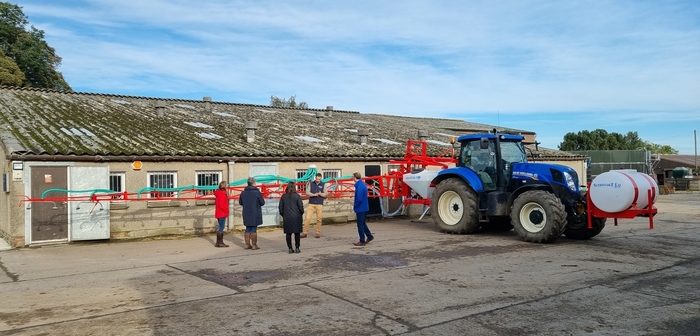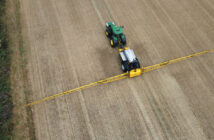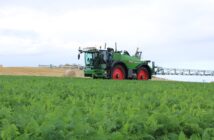On-Farm challenges faced when transitioning to regenerative agriculture, and how to overcome them, were explored during a recent webinar hosted by agri-tech innovation centre, CHAP.
Welcoming more than 100 farmers, agronomists, researchers and industry professionals, the online event explored the role of innovations such as the System Cameleon drill, and how these can be used successfully to support the principles of ‘regen ag’.
Opening the webinar was Professor Jane Rickson of Cranfield University, who set the scene and described the need for regen ag. She said: “There are five core principles of regenerative agriculture – minimise soil disturbance, maximise crop diversity, keep soil covered, maintain living roots all year round, and integrate livestock. At the heart of that is healthy soils, otherwise we can’t deliver those core principles.

Prof Jane Rickson
“Once we have those, we can further improve soil health, foster biodiversity and promote economic resilience in farming communities. If that isn’t towards a sustainable agriculture, I’m unsure what is. So I’d argue that ‘the answer is in the soil’.”
The second speaker was Newcastle University’s Farms Director, James Standen, who presented the obstacles that the institution has faced when transitioning over to regen ag. These included overcoming adverse weather conditions, improving soil health status, timeliness of operations, improving business resilience and focusing team thinking.
“Whilst we’ve been changing our thinking, we’ve had to bring the whole team with us to think in the same way,” said Mr Standen. “Moving forward, timeliness is key, we’re trying to maintain green cover as we move from one season to the next, whilst also improving the balance of our inputs.”
“Above all, a regen ag system has to not only be resilient environmentally, but also financially. So that is something we will be focusing on in the future.”
Swedish system Cameleon drill
Speaking next during the webinar was Leigh Nobes, farm manager at the MacGregor Farming Partnership in Norfolk. Mr Nobes spoke about the farm’s experience of the Swedish System Cameleon drill, a piece of equipment fast gaining pace among regen ag enthusiasts.
Among its benefits, the drill’s inter-row technique means it can work between crop rows after emergence. It provides an opportunity for reduced machinery costs, greater precision, and a delivery system to support reduced or alternative input use.
Speaking of System Cameleon, Leigh said “We bought the Cameleon in 2018 as we felt we needed additional weed control for our organic system. Because you can inter-row hoe, it opens up a much greater window.
“Advice for others considering a Cameleon, combine it with RTK GPS precision technology as it’s a worthwhile investment and will save effort in the future.”
Partnership with CHAP
To conclude the presentations, Reader in Precision Agronomy at Newcastle University, Dr David George, discussed the role of modern machinery within regenerative agriculture. This included the new tools and machinery that have recently arrived at the university through its partnership with CHAP, such as a crimper roller, CombCut weeder and Avacast spreader.
Dr George said: “With CHAP’s support we’ve been able to secure funding to bring in equipment that we believe might be able to help overcome the challenges we’ve experienced, to support Newcastle University Farms in becoming a regional hub for regen ag.
“An example is the Avacast spreader, something we hope to use to establish cover crops in standing crops. We’re excited to see how well this will perform.
“But, how are we hoping to spread the word and ensure it successfully informs what others are doing? From next year, we’ll be delivering a programme of events so visitors can see the kit in action. There’ll also be an opportunity to rent the equipment, to see if it really could work on a per-farm basis.”




